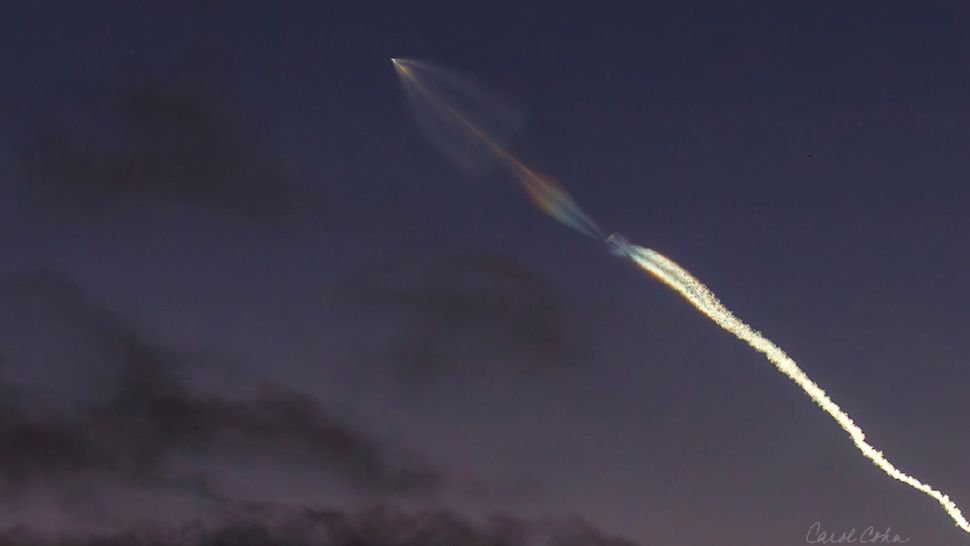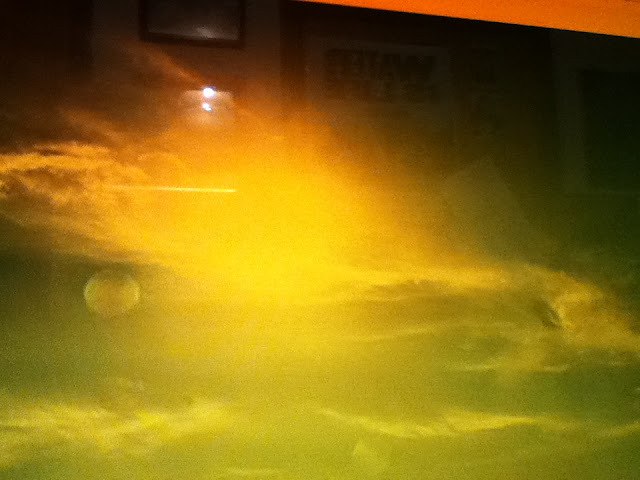Space Force Accident? Victus Nox Surveillance Satellite
Oops! US Space Force accidentally punched a hole in the upper atmosphere (😲OMG!)
WHAT in GOD's NAME are they doing? They could kill us all! I do get updates from Space Weather. Watching the sky is what I do... go look at Spaceweather.com- this surveillance stuff is making me CRAZY!
The separation of the first and second stages of the Firefly Aerospace Alpha rocket after launching on Sept. 14. Fuel burned during this part of the rocket's flight created a hole in the ionosphere. (Image credit: Carol Cohn)
A rocket carrying a Space Force surveillance
satellite may have created a hole in the ionosphere as it shot into
space.
Firefly Aerospace, a company contracted by Space Force, launched one of its Alpha rockets from Vandenberg Space Force Base in California on Sept. 14 at 10:28 p.m. local time, Live Science's sister site Space.com reported. The launch was not publicized or live-streamed, making it a complete surprise to the space exploration community.
The
rocket was carrying Space Force's Victus Nox satellite (Latin for
"conquer the night"), which will run a "space domain awareness" mission
to help Space Force keep tabs on what is happening in the orbital
environment. (REALLY? What or who are they looking for?)
The surprise rocket initially caught people's eye after creating an enormous exhaust plume that could be seen from more than 1,000 miles (1,600 kilometers) away. But after the plume dissipated, a faint red glow remained in the sky, which is a telltale sign that the rocket created a hole in the ionosphere — the part of Earth's atmosphere where gases are ionized, which stretches between 50 and 400 miles (80 and 645 km) above Earth's surface — Spaceweather.com reported.
Related: Environmental groups sue US government over explosive SpaceX rocket launch
This is not the first "ionospheric hole" observed this year.
In July, the launch of a SpaceX Falcon 9 rocket created an enormous blood-red patch above Arizona that could be seen for hundreds of miles. (REALLY? Can they do that and not get charged for a crime?)
Rockets create ionospheric holes when fuel from their second stages burns in the middle part of the ionosphere, between 125 and 185 miles (200 and 300 km) above Earth's surface, Live Science previously reported. The holes pose no threat to people on Earth's surface and naturally close up within a few hours as the recombined gases get re-ionized. (WHO SAYS?)
Where are your tax dollars going?
The
aim of the mission was to "demonstrate the United States' ability to
rapidly place an asset in orbit when and where we need it, ensuring we
can augment our space capabilities with very little notice," Lt. Col.
MacKenzie Birchenough, an officer with Space Force's Space Systems
Command, said last year when the mission was first announced.
—Lightning strikes Artemis I mission's 'Mega Moon rocket' launch pad during tests
—World's largest communication satellite is a photobombing menace, astronomers warn
👉—SpaceX space junk crash lands in Australian sheep farm
I wrote a poem about SPACE JUNK...
ahh... remember when they shot down a Chinese spy balloon?
Has it hit you yet? We know little to nothing but we think we do...
- Get link
- Other Apps






Comments